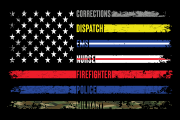The Efficacy of Cinema Therapy
I have been a trauma and addictions therapist for 6 years, and practice several modalities of therapeutic technique. In my experience a most effective and interesting style is Cinema therapy. I believe it is extremely valuable to a counselor or client to explore as many modalities of therapy as they can, but more importantly to delve into the reasons why they work the way in which they work. As a therapist in an environment as filled with challenge as the Refuge, I am always searching for different interventions to reach clients. The clients I service are survivors of trauma often with co-occurring addictive behaviors or mental health issues, most of them have been to numerous treatment centers and spent years in therapy before they ever get to me. They require more than just standard talk therapy, which coupled with my own experience as an actor and director moved me towards Cinema Therapy. This intention of the article is to explore the topic with a broad brush. The areas to be explored are: What is Cinema Therapy? Where did it originate? How does it work? Why does it work? What conclusions and opinions have I come to?
What is Cinema Therapy?
In its simplest terms Cinema Therapy can be described as, the use of film to evoke, emotion, movement or to make a therapeutic point to a client in therapy. It has also been described as “a therapeutic process in which clients and therapists discuss themes and characters in popular films that relate to core issues of ongoing therapy (Hesley, 1997).” In practical terms this modality uses films to help people make connections with the issues in their lives.
Where did Cinema Therapy originate?
The use of Cinema as a therapeutic technique has been linked to bibliotherapy (Caron), which is the use of literature to create a “therapeutic interaction” with a client (Hynes, 1986). It is common practice that a therapist will hand a book to a client to help them understand a subject better, or connect to emotion, just as in cinema therapy. It is my contention that Cinema Therapy is in fact linked to the ancient art of using story as a teaching tool. Since the dawn of man and cave paintings, humans have used story to teach and inspire. The medicine men would tell legends and stories to the tribe to teach them both what to do and what not to do. Mythology is filled with stories of hero’s, villains, trials and tribulations all to show man how to move forward or not fall back. Jesus, Buddha, Confucius and many great spiritual teachers used story or parable as a way to inspire and teach. It is very much a part of the Jewish, Native American and Christian tradition to use story, as exemplified in rabbinical teachings, tribal lore and the stories of the bible both new and old testament. This tradition was carried forth into fairy tales that we were told as children, always looking for the moral of the story. From the written word and the storyteller and religious story, theater was born, and while entertaining it was also moralistic, in fact much of early theater beyond the Greeks was church driven and meant to teach. Great literature and bibliotherapy are another link in this chain. As early as 1840, Sir Walter Galt cataloged fictional and nonfictional literature recommended by psychiatrists (Hesley, 1997). Finally we advance to the newest form of storytelling, cinema and all that it comprises. In fact much of film is based on mythology in general and Joseph Campbell’s theories of mythology and story format more specifically. Christopher Vogler in his book “The Writers Journey” discussed this very issue, according to Vogler, “The ideas expressed in Campbell’s book (The Hero with a Thousand Faces) are having a major impact on storytelling”. He also suggests that, “Filmmakers like George Lucas and George Miller acknowledge their debt to Campbell and his influence can be seen in the films of Steven Spielberg, John Boorman, Francis Coppola and others. (Vogler)” The reason this correlates to the topic is that Campbell’s work is about the role of the hero in myth, one grows into that role. One of the main tenets of therapy is the growth of the individual and helping them gain power in their lives, what I often call becoming the hero of their own story.
How does Cinema Therapy work?
An example of Cinema Therapy could be a client who was having difficulty getting in touch with emotion around the relationship between a father and son, or struggled with understanding the impact their father may have had on their lives, a therapist might ask them to watch “Life as a House”. “Life as a House” is a film in which, Kevin Kline plays a man that finds out he is dying, as he looks back at his life he sees all the failures and unhappiness embodied in the house his father built. The house is falling apart and in need of serious repairs but the foundation is good and it can be rebuilt. With the central theme around his own father, this character looks to his own teenage son who is struggling with issues of addiction and sexuality which in part stem from his relationship with Kevin Kline’s character (his father). Through much struggle and pain, part of which is revealing his relationship with his own father, the two start to rebuild the house before the characters death. In this brief overview of the movie you can easily see the metaphor and therapeutic opportunities for a client who is also struggling with similar if not identical issues. Cinema Therapy can be used to help clients understand almost any issue as cinema covers an extremely broad scope of themes. In his book “Reel Therapy” Dr. Gary Solomon talks about how the modality works using the concepts of “suspension of disbelief”, the following is an excerpt:
If I can get people to suspend their disbelief and accept the story of the characters as real-life situations, I can help them see themselves, their family, or friends through the movie they’re watching. You see, suspension of disbelief is the mirror image of denial. Each of the movies can, for many people, bring out some emotional attachment to the stories and characters long enough help them deal with their own problems and issues. My experience in using movies for this purpose is that clients and patients move more rapidly through the denial stage of their treatment when they use the movies I have recommended to bring themselves out of denial (Solomon, 2001).
Dr. Solomon also talks about the concept of “paradoxical healing” in this excerpt:
Take “Leaving Las Vegas”, for example. Here is a man who has given up on life and decides to drink himself to death. He meets a woman who tries, in her own way, to stop him. You think of this couple as a bad accident waiting to happen. By watching this behavior, I believe we can learn through their mistakes so we can do just the opposite. That is paradoxical healing and healing by proxy (Solomon, 2001).
These are two examples of how Cinema Therapy can and does work. Another way is creating empathy. For many clients there is a great need for empathy in order to grow, in fact it is often necessary to be able to see yourself as part of something greater and feel for the struggles and triumphs of others in order to achieve your own. Film offers us the opportunity to create empathy, since it initially is a safe modality to feel whatever you feel, since there is no flesh and blood human being that you are interacting with. Film elicits emotion that is why people choose to pay money to view movies. Films also introduce clients to ideas that might be too threatening if suggested directly (Hesley, 1997). Hesley discussed Stephen S. Pearce views on metaphors in “Flash of Insight” “Narrative and metaphor afford individuals the individuals the opportunity to distance themselves from events in their own experiences and become the protagonist in their own lives narratives” (Hesley, 1997).
What conclusions and opinions have I made about Cinema Therapy?
In conclusion I find Cinema Therapy to be highly effective modality; that has been in existence in one form or another since the beginnings of man teaching man. As previously stated the concepts of Campbell’s “The Hero’s Journey” and the “Power of Myth” can be used to show a client that although they have struggled they have also gained from that struggle. Movies such as, “Star Wars”, “The Lord of the Rings” and “Harry Potter” exemplify this message. I believe it is proven that parable, story and myth are powerful tools in helping human beings grow and change. When dealing with wounded human beings who have serious issues with trusting other human beings Cinema Therapy can be a tool that feels less threatening and therefore can be highly effective. It is my opinion that Cinema Therapy gives a therapist an effective modality in which clients have the opportunity for healing and growth.
References
- Caron, J. J. (n.d.). DSM at the Movies: Use of Media in Clinical or Educational Settings. Article 38 .
- Hesley, J. w. (1997). Rent Two Films and Let’s Talk in the Morning: Using Popular Movies in Psychotherapy. New York: Wiley.
- Hynes, A. &.-B. (1986). Bibliotherapy: The interactive process. Boulder, Co: Weswtview Press.
- Solomon, D. G. (2001). Reel Therapy How Movies Inspire You to Overcome Life’s Problems. New York, NY: Lebhar-Friedman books.
- Vogler, C. The Writer’s Journey Mythic Structure for Storytellers and Screenwriters.








